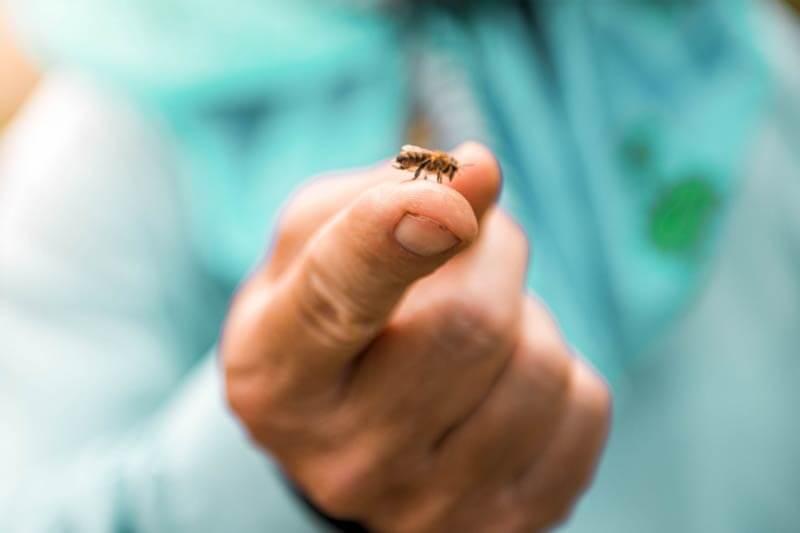Allergic reactions to stinging insects may be more common than you think! Read on to learn a few essential statistics and how to spot a bee sting allergy in yourself or your loved one.
The Commonality of Bee Sting Allergies
Not everyone knows how common bee sting allergies are. It’s important to understand these statistics so that you can respond appropriately to an insect sting. Sharing this information with others can make a big difference, too.
The Percentage of Americans with a Bee Sting Allergy
Between 5 and 7.5% of Americans are hypersensitive to insect stings.4 This percentage of the population is at risk for an anaphylactic shock if they are stung by a bee or wasp.
The Risk of Beekeepers and Bee Sting Allergies
Beekeepers experience bee sting allergies at a higher rate than the rest of the general population. Caring for bees increases the risk of systemic allergic reactions to 32%.4
Fatalities Due to a Bee Sting Allergy
Anaphylaxis occurs when allergic reactions become deadly. Each year, 60 people in the United States die due to anaphylactic shock after being stung.2 These preventable fatalities account for 20% of all anaphylactic-related deaths.
How to Recognize a Bee Sting Allergy
Common Symptoms
Since bee stings are common, it’s important that you don’t become overly concerned about normal post-sting symptoms. You can expect to experience:
- Burning
- Slight swelling
- A red welt
These symptoms will go away on their own with a little bit of time. Anti-itch cream, pain relievers, and cool compresses can help ease the pain.
Moderate Symptoms
If your body sees the sting as too much of a threat, your immune system may begin to overreact. It’s important to notice these symptoms early:
- Moderate swelling at the sting site
- Itchy and watery eyes
- Runny nose
- Rash
Most likely, these symptoms will also go away with an anti-histamine and time. But please, take them seriously! Your next sting could be worse. Document your symptoms and talk to a local medical professional about a bee sting allergy.
Severe Symptoms
A severe allergic reaction needs immediate attention. If you or a loved one begins to experience any of the following symptoms, call 911 and use an epinephrine pen if you are prescribed one.
- Trouble breathing
- Hives or swelling
- Tightness of the throat
- Hoarse voice
- Nausea
- Vomiting
- Abdominal pain
- Diarrhea
- Dizziness
- Fainting
- Low blood pressure
- Rapid heartbeat
- Cardiac arrest
It’s also important to remember that a severe bee sting allergy can occur immediately or appear up to 12 hours after a sting occurs. Watch your symptoms carefully. Make sure to follow up with a medical professional. You may be a candidate for venom immunotherapy, a highly effective treatment for desensitizing bee sting allergies.3
Stay Informed about Bee Sting Allergies
Bee stings are minor wounds, but they affect everyone differently. For some, the injury and the symptoms are as inconsequential as a small scratch. But for others, a sting can quickly become a life or death emergency. Plus, bee stings mostly occur outdoors when you may be in a remote location. Staying informed about bee sting allergies and getting tested when you have concerns is the best way to keep you safe.






